Thuja western "Sankist": description of the variety, features of planting and care
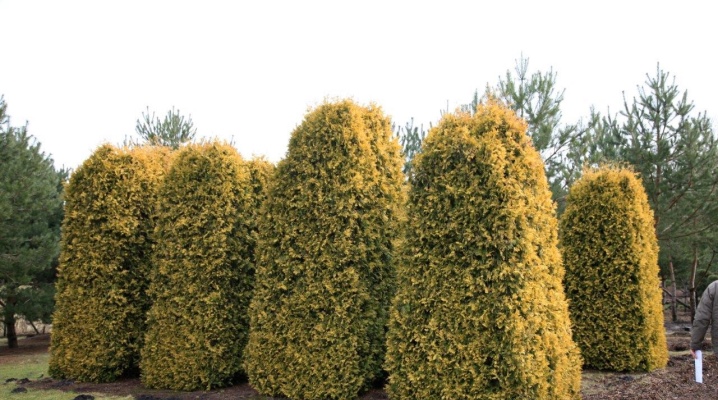
Evergreen conifers are widely used in landscape design. Among a wide variety of species and varieties, each gardener will be able to choose the most suitable one in terms of size, crown shape and other parameters. An excellent representative of this family is the Sankist variety.

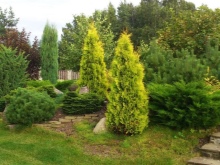
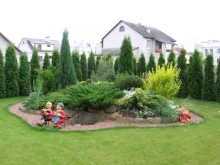
Description
Thuja western are rather unpretentious plants, most often they tolerate frost and drought well, growing both in the shade and in a lit area. Their historical homeland is North America, mainly in the eastern regions. Here they grow as giants - up to twenty meters in height.
They differ in the shape, width and height of the tree, as well as in the color of the needles.
Thuja western "Sankist" is considered one of the most valuable varieties, comes from the well-known variety "Luteya". Translated from English, sunkist means "bundle of the sun."
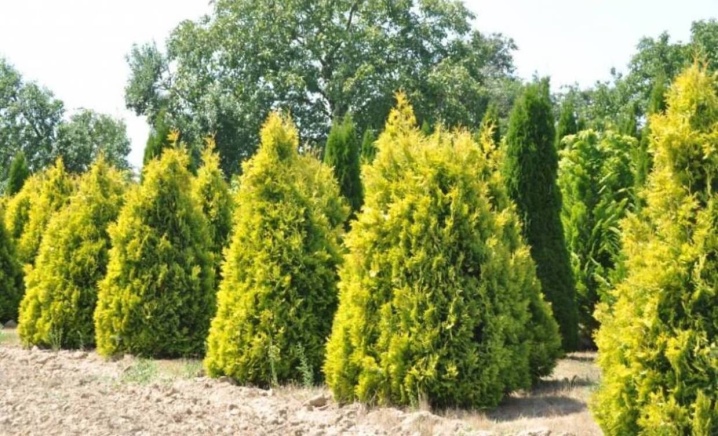
The variety description includes important parameters that an experienced gardener should be aware of.
- The crown is in the form of an even cone, the branches grow densely, straight up, twisting slightly and forming a kind of "shell".
- The size of a young tree grows very slowly. During the year, the growth is usually about five centimeters (both in width and height). At the age of ten it grows up to 2–2.5 meters with a crown volume of 1.5 m. In the future, it can stretch a little more, but the height of an adult specimen cannot be more than 4.5–5 meters.
- An interesting feature of the variety is the color of the needles, which changes depending on the season and the location of the seedling. In early spring, young “needles” are yellowish-golden. In summer, in the illuminated area, the color becomes more saturated, and in the shade, on the contrary, it acquires greenish tints. In late autumn and winter, thuja needles of this variety are of noble bronze color. The bark on the trunk is gray or reddish, slightly flaking.
- The plant is shade-tolerant, but looks much more decorative in an open, sunny or semi-shaded place.
- It is characterized by high winter hardiness, withstands frosts down to - 42 degrees. Good wind resistance.
- The danger is sunburn, especially in the winter-spring period, as well as wet and melting snow, which can break delicate twigs.
- Poorly tolerates prolonged drought - the crown becomes sparse, the needles grow dull, decorativeness is lost.
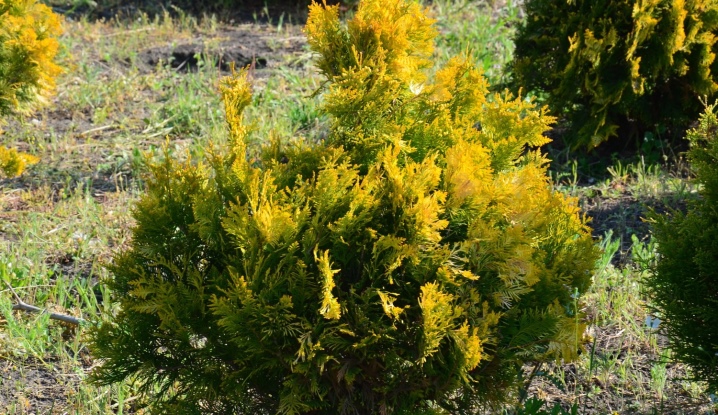
Landing
Thuja varieties "Sankist" are best planted in an open area with light shading during the hottest hours.
The plant is not very demanding for the composition of the soil, however, preference is given to fertile and well-loosened soils, without stagnant moisture.
The planting of this decorative tree should be carried out according to a certain scheme.
- Dig a hole. Its width is twice the volume of the seedling roots, and its depth is 60–80 centimeters.
- If the groundwater is close or the soil is heavy, with a high content of clay in the composition, drainage is necessary. To do this, the bottom of the pit is covered with crushed stone or broken brick, while the layer thickness should be no more than 20 cm.
- Then a soil mixture is made, consisting of half of sod land with the addition of 1/4 peat and 1/4 sand. The seedling is installed in the middle of the pit, strictly vertically, and the soil is gradually poured out. A little compacted, trampled, watered abundantly.
- To reduce evaporation, the trunk circle is mulched with crushed pine bark, chips or peat.


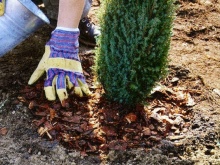
Care
activity Thuja care is very simple.
- In the first time after planting, young plants need frequent watering - once or twice a week, depending on weather conditions. One bucket of water is poured under each tree; in extreme heat and drought, two buckets are poured. Sometimes it is necessary to arrange the sprouts of souls to wash the dust off the needles. In the future (as it grows), it is watered once every two weeks. Try to avoid drying out the ground under the tree.
- Timely weeding is also important. After rain or watering, the topsoil is loosened and then mulch is added.
- For better development and decorativeness, the plants are fed. Fertilizers with a nitrogen-phosphorus composition are applied in the spring, and potash fertilizers in the fall. Consumption rates can be found in the instructions. Caution: under no circumstances should it be applied under wet manure, humus or urea! The tree will die from this!
- In late autumn or at the very beginning of winter, the crown of the thuja is pulled together with twine and wrapped in burlap or covering material. This is done in order to protect the delicate needles from sunburn in early spring, as well as to save the branches from the adhesion of snow and breaks.
- In the spring, the shelter is removed, the plant is examined. Pruning is done, damaged branches are removed, crown formation is carried out.
- This variety is distinguished by strong immunity, it is extremely rarely damaged by diseases and pests.
To avoid the defeat of fungal diseases, for prophylaxis in the spring, the crown is treated with 1% Bordeaux liquid.

Thuja "Sankist" is an excellent choice for decorating a summer cottage and a personal plot. The variety is unpretentious in care, tolerates pruning and shaping well. From the crown, you can create a wide variety of shapes, it is also suitable for hedges, group and single plantings on the lawn, in a rocky garden. Thuja looks very good in rock gardens, in the company of flowering perennial plants.
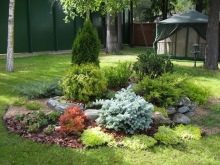
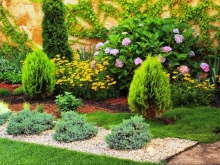
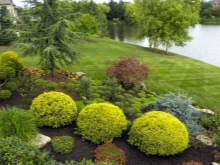
You will learn more about thujas "Sunkist" by watching the following video.



































































The comment was sent successfully.